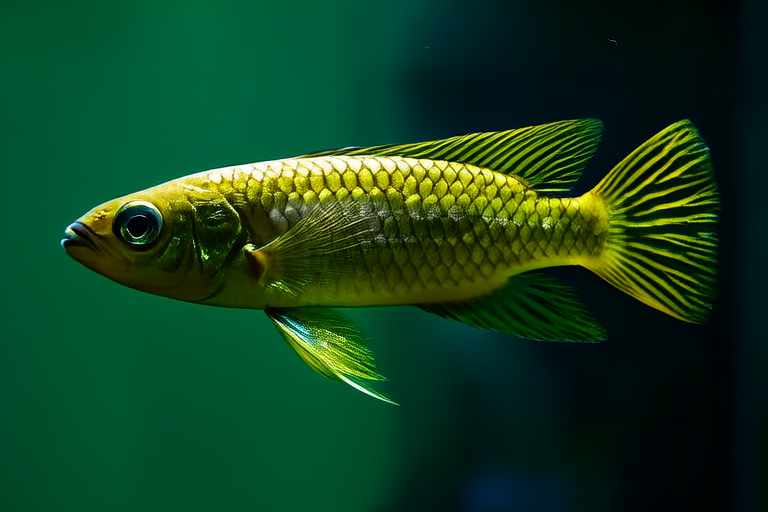How to Choose and Care for Your First Arowana: Expert Advice Revealed
Arowanas, often referred to as “Dragon Fish,” are among the most captivating and popular aquarium species due to their striking appearance and unique behaviors. These ancient creatures have been revered for centuries, symbolizing prosperity and good fortune in many cultures. With their elongated bodies, vibrant colors, and powerful jumping abilities, they command attention wherever they are placed. However, their care requirements can be quite demanding, making them suitable for experienced aquarists or those willing to learn.
Selecting the Right Tank Size and Setup
The first step in providing optimal care for your Arowana is choosing the appropriate tank. Given their large size and active nature, arowanas require ample space. A minimum tank size of 300 gallons (1136 liters) is recommended for a single adult fish. For multiple arowanas, each additional fish will need an extra 100 gallons (378 liters) of water. The tank should be long rather than tall, allowing the fish to swim horizontally without undue stress.
In terms of setup, arowanas prefer a planted tank with plenty of open swimming areas. Use hardy plants that can withstand the fish’s occasional nibbling, such as Java ferns or Amazon swords. Decorative rocks and driftwood can also add aesthetic appeal while offering hiding spots. Ensure that any decorations are securely anchored to prevent accidents. A gentle filtration system is essential to maintain water quality without causing excessive current.
Ideal Water Conditions
Arowanas thrive in slightly acidic to neutral water with a pH range of 6.5 to 7.5. The temperature should be maintained between 75°F and 82°F (24°C to 28°C). Regular monitoring of these parameters ensures a stable environment for your fish. Invest in reliable testing kits and consider an automatic water chiller if you live in a warm climate. Additionally, ensure adequate aeration through a robust filter or air pump.
Proper Diet
Arowanas are carnivorous predators that enjoy a varied diet. Their staple food includes high-quality pellets designed for large carnivorous fish. Complement this with live or frozen foods like feeder goldfish, shrimp, and worms. Introduce new foods gradually to avoid digestive issues. Feed your arowana two to three times per week, ensuring they consume all the food within five minutes to prevent waste buildup.
Choosing Healthy Fish at Purchase
Purchasing a healthy arowana is crucial for its longevity. Look for fish with bright, clear eyes and no visible injuries or lesions. The gills should be pinkish and free from excess mucus. Observe the fish’s swimming patterns; a healthy arowana moves gracefully and actively explores its surroundings. Avoid fish showing lethargic behavior or floating at the surface.
Signs of Good Health and Common Diseases
Healthy arowanas exhibit vibrant coloration and consistent activity levels. They breathe steadily without gasping at the surface. Regularly check for signs of disease, including loss of appetite, pale gills, or rapid breathing. Common ailments include bacterial infections, fungal growth, and parasitic infestations. Early detection and prompt treatment with appropriate medications are key to recovery.
Maintaining Water Quality
Water quality directly impacts your arowana’s health. Perform weekly partial water changes, removing about 20% of the water volume and replacing it with fresh, dechlorinated water. This helps eliminate toxins and maintain stable water chemistry. Use carbon-based filters to remove organic compounds and improve clarity. Regular cleaning of the tank and equipment prevents the accumulation of harmful substances.
Feeding Schedules
Establishing a consistent feeding schedule promotes healthy digestion and reduces the risk of overfeeding. Feed your arowana during specific times each day, allowing it to establish a routine. Monitor how much food is consumed and adjust portions accordingly. Overfeeding leads to poor water quality and potential health issues.
Tank Maintenance
Regular maintenance keeps your arowana’s habitat clean and inviting. In addition to water changes, vacuum the substrate regularly to remove uneaten food and debris. Inspect plants and decorations for algae buildup, scrubbing them gently as needed. Replace worn-out filters and clean filter media to maintain efficient operation.
Handling and Bonding with Your Arowana
While arowanas are generally shy around humans, some individuals may become accustomed to their presence over time. Handle your fish only when necessary, using a net to minimize stress. Approach slowly and speak softly to create a calming atmosphere. With patience and consistency, you can develop a bond based on trust and mutual respect.
Raising an arowana requires a significant time commitment. These fish can live up to 20 years, so prepare for a long-term relationship. Stay informed about the latest care techniques and be prepared to adapt as your fish grows. Join online forums and local hobbyist groups to connect with other enthusiasts and share experiences.
Conclusion
Choosing and caring for your first arowana is an exciting journey filled with challenges and rewards. By understanding their unique needs and dedicating yourself to proper care, you can provide a thriving home for these magnificent creatures. Remember, the effort you invest today will ensure a lifetime of companionship with your arowana.
